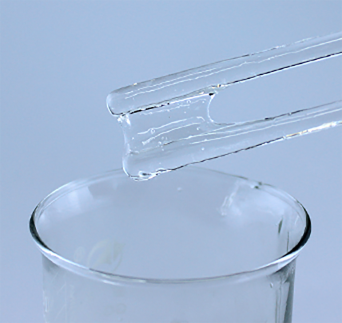
10 сар . 10, 2024 21:30 Back to list
Hydroxyalkyl Cellulose Applications in Various Industries and Its Properties Explained
Understanding Hydroxyalkyl Cellulose Properties, Applications, and Benefits
Hydroxyalkyl cellulose (HAC) is a water-soluble polymer derived from cellulose, one of the most abundant biopolymers found in nature. This compound is primarily modified through the introduction of hydroxyalkyl groups, which significantly alter its solubility, viscosity, and thermal stability, making it a versatile agent in various applications ranging from pharmaceuticals to cosmetics and construction materials.
Chemical Structure and Properties
The structure of hydroxyalkyl cellulose involves the substitution of hydroxyl groups on the cellulose backbone with hydroxyalkyl moieties, such as hydroxyethyl or hydroxypropyl groups. This modification not only enhances the water solubility of cellulose but also influences its physical properties, including viscosity and gel formation. The degree of substitution (DS) greatly impacts the properties of HAC. A higher DS generally leads to increased solubility and a lower viscosity in solution, which is advantageous in several applications.
One of the key attributes of hydroxyalkyl cellulose is its ability to form viscous solutions. These solutions can provide enhanced stability and improved texture, making HAC a popular choice in the formulation of gels and creams. Additionally, it exhibits excellent film-forming properties, which is crucial for coatings and binding applications. Furthermore, HAC is known for its bio-compatibility and non-toxic nature, making it suitable for use in various consumer products.
Applications in Different Industries
1. Pharmaceuticals In the pharmaceutical industry, hydroxyalkyl cellulose serves as a thickening agent, binder, and film-forming agent. It is used in the formulation of drug delivery systems, providing controlled release of active ingredients. Its bio-adhesive properties enhance the residence time of the formulation on biological membranes, thus improving drug absorption.
2. Cosmetics and Personal Care HAC is widely used in cosmetics due to its emulsifying and stabilizing properties. It helps maintain the texture and consistency of creams, lotions, and gels. Furthermore, it acts as a moisturizing agent, enhancing the skin’s hydration by forming a protective film that reduces water loss.
hydroxyalkyl cellulose

3. Food Industry Though not as common as in pharmaceuticals or cosmetics, hydroxyalkyl cellulose can also be found in food products as a thickener and stabilizer. Its ability to modify the texture of sauces, dressings, and dairy products makes it valuable in food formulations.
4. Construction In the construction sector, hydroxyalkyl cellulose is used in cement and mortar formulations. It enhances the workability and flow properties of these mixtures, ensuring ease of application. Additionally, it helps improve the water retention of mortars, thereby prolonging the setting time and enhancing bonding.
5. Industrial Applications HAC is utilized in various industrial applications, including coatings and adhesives. Its film-forming capabilities provide not only adhesion but also resistance to water and oil, making it suitable for protective coatings.
Benefits of Hydroxyalkyl Cellulose
The versatility of hydroxyalkyl cellulose makes it an invaluable ingredient across numerous industries. Its ability to form stable emulsions and enhance texture provides manufacturers with the ability to create high-quality products that meet consumer demands. The non-toxic and eco-friendly nature of HAC also aligns with the growing trend towards sustainable and biodegradable ingredients in product formulations.
Moreover, HAC can be easily modified to suit specific needs, allowing for the customization of products based on the desired properties. This flexibility is particularly beneficial in research and development, where tailored solutions can lead to innovation in product design.
Conclusion
Hydroxyalkyl cellulose represents a fascinating intersection of natural polymer chemistry and advanced material science. Its diverse range of applications and beneficial properties makes it a critical component in numerous products that consumers use daily. With ongoing research and development, the potential for new applications and improvements in existing formulations continues to grow, affirming HAC's position as a pivotal ingredient in modern manufacturing processes. As industries evolve, hydroxyalkyl cellulose is set to play an increasingly significant role in ensuring the quality and efficacy of everyday products.
-
Versatile Hpmc Uses in Different Industries
NewsJun.19,2025
-
Redispersible Powder's Role in Enhancing Durability of Construction Products
NewsJun.19,2025
-
Hydroxyethyl Cellulose Applications Driving Green Industrial Processes
NewsJun.19,2025
-
Exploring Different Redispersible Polymer Powder
NewsJun.19,2025
-
Choosing the Right Mortar Bonding Agent
NewsJun.19,2025
-
Applications and Significance of China Hpmc in Modern Industries
NewsJun.19,2025







